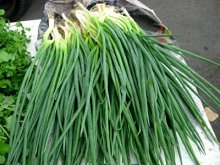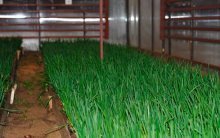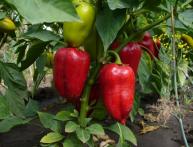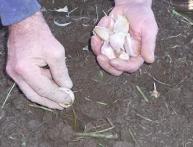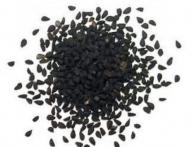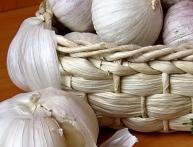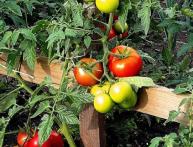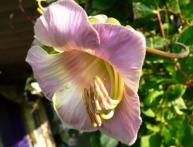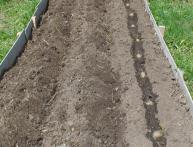Onion varieties: description, selection, planting

Onion is a herbaceous plant of the Onion genus, including several edible and ornamental species. It is of great importance in cooking and folk medicine.
When preparing dishes, both the underground part is used - the bulb, similar in shape to a turnip, hence the name onion, and the above-ground green leaves, which most often have a narrow pipe-shaped or narrow flat shape and look like long feathers.
Content:
Types and varieties of onions for cultivation
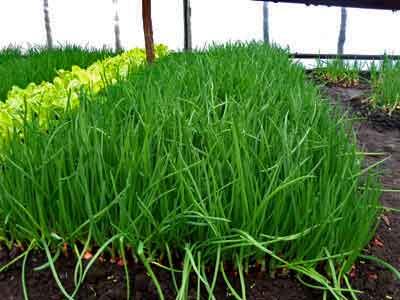
The most popular and widely grown species onions on greens is the onion batun. It has a well-developed ground part, represented by long tubular leaves up to 1 m high.
The leaves of the onion are similar to the leaves of the onion, but are superior in vitamin and beneficial substance content. It grows in one place for several years.
Onions are grown in two cycles - sowing seeds and planting onions (sets).
To obtain green onions, you can use either forcing the feathers from the bulbs or planting special varieties of onions on the feathers.
Varieties of onion batun
- Ural family - winter-hardy mid-season variety, gives a harvest of greenery 25 days after green leaves begin to grow. It reaches a height of 35 cm to 50 cm, the taste is semi-sharp, the leaves are tender. The variety is productive, producing more than 7 kg per square meter per season. The variety is frost-resistant, propagated only by dividing the bush.
- Seryozha is an early variety of onion - batun.Has good winter hardiness. The leaves are straight, gray-green in color, more than half a meter long. The taste is semi-sharp.
- Semiletka is a mid-season variety, suitable for growing on private farms both for personal needs and for sale.
- May - mid-late onion batun. A good variety for both personal use and for growing on farms for sale.
Basic techniques for growing batun
Some varieties of onion can be propagated by dividing the bush in spring or early summer. The bulbs are planted to a depth of up to 3 cm, the distance between them is up to 25 cm. Sowing seeds produced in early May.
It should be remembered that 1 g contains approximately three hundred seeds and the crops can turn out to be very dense. Therefore, they will require thinning. In July you can cut the leaves for greenery; they will grow again until autumn. In autumn, greenery is not cut.
The next year, as soon as the leaf begins to grow, the first harvest can be harvested after 25 days, the second after 55 days.
Onion Schnitt
Chives - onions - are another type of onion that is grown for its greenery, although small false onions, up to 1 cm in diameter, are also eaten. The first greens appear immediately after the snow melts and have a very delicate taste.
Variety Bohemia - productive perennial chives - onions. Grows in one place for up to five years. The first cutting of greenery takes place three weeks after the start regrowth of green leaves.
Chemal is a pungent variety of onion that produces a harvest suitable for mass harvesting the year following planting. It is completely removed in the spring. Only the uterine bushes are left.
Honey plant - produces a harvest approximately 90 days after the start of regrowth. The taste of greens is semi-sharp. Suitable for growing in private farms.The technology for growing chives is similar to the technology for growing trumpet.
In the first years of planting, chives and onions require regular weeding, but later they form a dense turf. Like all onions, it prefers soil well fertilized with organic matter and mineral fertilizers.
Shallot
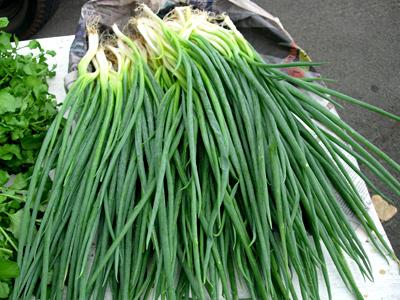
Shallots are a type of onion that forms many small fused bulbs that serve as seed material for the next season. It is grown mainly for greens as a biennial crop. Leaves are cut several times per season.
The following varieties are recommended for homestead farms:
- Andreika - mid-season onion with a semi-sharp taste
- Afonya - productive onion with an average ripening period.
- Onion - slime
Slime onions are grown for greenery, which they produce almost immediately after the snow melts, and are valued for being the first garden herb.
Recommended varieties:
- Leader
- broadleaf
- Green
- Dwarf
- Belorussian
A distinctive property of the slime onion is the accumulation of slimy juice inside the leaves. In the fall, having dug up an onion bush from the garden bed, you can transplant it into a flower pot and have a harvest of greenery on the windowsill all winter.
Bear onion - wild garlic
Separately from the above types and varieties of onions, there is wild garlic, the flat leaves of which in appearance bear little resemblance to an onion feather, and the taste and smell of wild garlic is very similar to garlic, although wild garlic is also a type of onion. Young leaves are used for food.
All types of onions that are grown for their greens are cultivated mainly in open ground. In closed greenhouses or greenhouses, they use a method of forcing greens from onion varieties.
Varieties of onions for obtaining green feathers
Many housewives grow onions on the windowsill by placing an ordinary onion in water. A similar technique is used in greenhouses, where onion greens are produced using hydroponics. This is much more profitable than planting onions to force greenery into the ground.
Greenhouse farms use both methods getting greens from onions. The planting material in this case will be onions - selections, that is, small-sized bulbs selected from onions - turnips.
The best varieties for this are:
- Strigunovsky
- Rostovsky
- Arzamas
- Mstersky
- Union
- Bessonovsky
Greens can be cut from one bulb several times; as a rule, this is done two to four times. After which a new batch of bulbs is planted. Cutting is carried out after the leaves reach a length of 35 - 40 cm.
It should be said that growing onions for greens for sale, both in a greenhouse and in open ground, can become an additional family business, since vitamin greens are in demand among the population at any time of the year.
Interesting information about the vegetable garden

